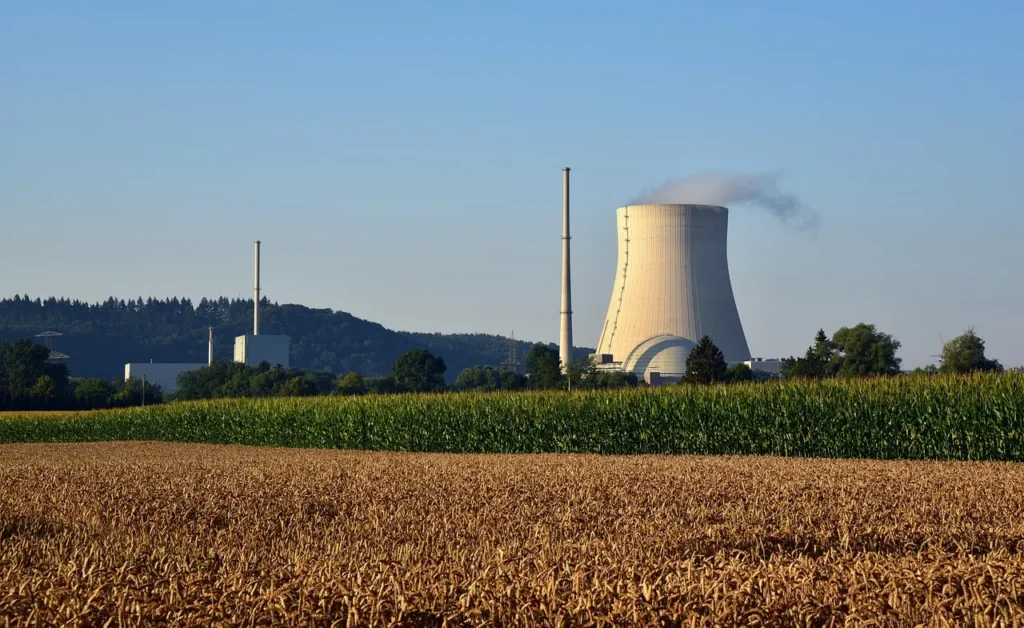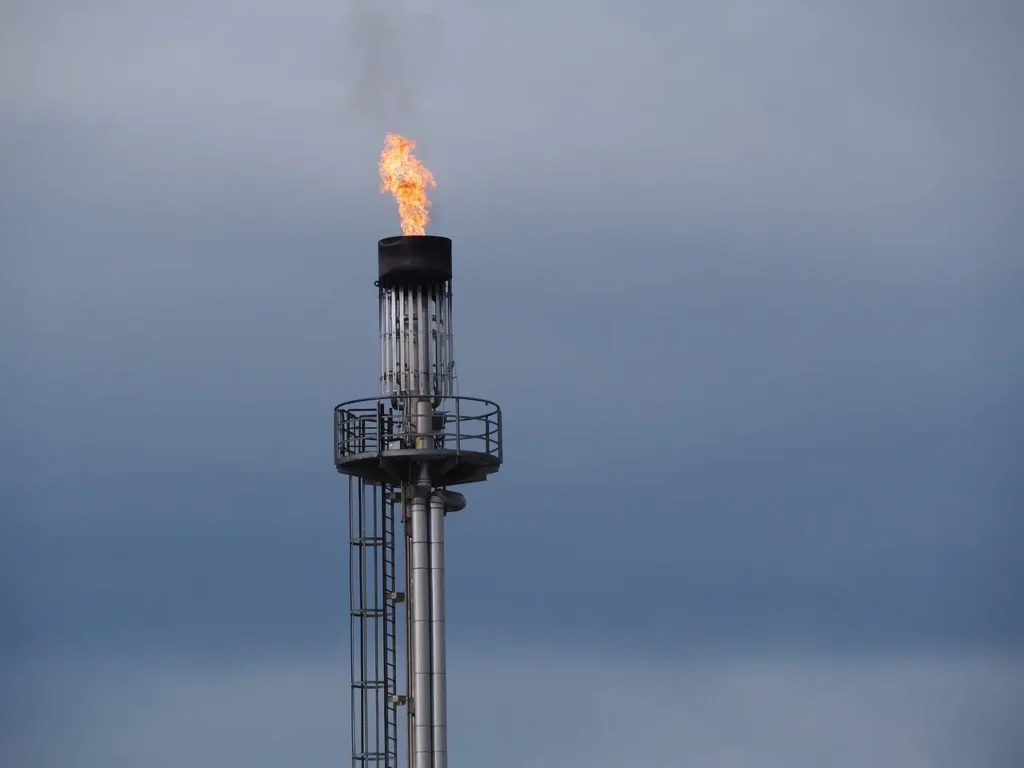
Uses of Nuclear Energy: How Nuclear Power Benefits More Than Just the Grid
From powering homes to advancing medicine and space exploration, this blog explores the many ways nuclear energy is driving innovation across industries.
5 minute read • Last update April 2025

In this article
Uses of nuclear energy
Nuclear energy can be used in many ways, including:
- Electricity generation
- Medical applications such as radiation therapy, diagnostic imaging, and sterilization of equipment
- Agricultural innovation such as plant mutation, fertilization, and pest control
- Space exploration
- Water desalination
- Criminal investigations
Nuclear energy is often thought of strictly in terms of electricity generation, but its benefits extend far beyond powering homes and businesses. The uses of nuclear energy range from cutting-edge medical treatments and industrial diagnostics to agricultural innovation and interstellar exploration.
Nuclear technology is deeply integrated into our modern infrastructure. Understanding these multifaceted applications is essential to shaping comprehensive energy strategies and advancing innovation across multiple sectors.
As energy policy continues to evolve toward decarbonization and long-term resilience, nuclear energy is poised to play a pivotal role—not just as a clean baseload source, but as a versatile technological foundation across industries.
Nuclear energy for electricity generation
Nuclear power plants are a cornerstone of the global push toward reliable, low-emission electricity. They provide stable, around-the-clock power generation with virtually zero greenhouse gas emissions during operation. In contrast to intermittent sources like wind and solar, nuclear delivers consistent output, making it ideal for grid stability.
Modern nuclear reactors operate at high efficiencies, with capacity factors frequently exceeding 90%. This means they produce energy more consistently than any other generation source. Moreover, nuclear energy helps countries reduce their reliance on imported fossil fuels, improving national energy security.
With life cycle emissions comparable to wind and lower than solar, nuclear is one of the cleanest large-scale power sources available. It plays a key role in meeting net-zero targets, supporting electrification efforts, and providing a dependable foundation for renewable integration.
Nuclear energy generation in Texas
Texas may be known for its oil and wind, but nuclear quietly plays a critical role in the state’s energy mix. Two major nuclear facilities—South Texas Project (STP) in Matagorda County and Comanche Peak Nuclear Power Plant in Somervell County—provide over 4,000 megawatts of reliable, carbon-free electricity to the ERCOT grid.
The South Texas Project alone produces enough energy to power more than 2 million homes annually, with minimal emissions. Comanche Peak supports North and Central Texas with stable baseload generation, reducing pressure on fossil fuel plants during peak demand.
Beyond environmental benefits, Texas’s nuclear facilities provide thousands of high-paying jobs, stimulate local economies, and serve as anchors for energy resilience in a state frequently challenged by extreme weather and demand spikes.
Nuclear energy in medicine
Perhaps no sector has benefited more from nuclear technology than healthcare. Nuclear medicine uses radioactive isotopes to both diagnose and treat disease, offering powerful tools that traditional medicine cannot replicate.
Radiation therapy
Radiation therapy is one of the most effective cancer treatments available today. By directing high-energy radiation at tumors, oncologists can destroy malignant cells with precision while minimizing damage to surrounding healthy tissue. Techniques such as external beam radiation and brachytherapy have significantly improved survival rates for a range of cancers.
Diagnostic imaging
Advanced imaging technologies like PET (positron emission tomography) and SPECT (single-photon emission computed tomography) rely on radiotracers to provide detailed views of internal organs and tissues. These scans allow early detection of cardiovascular diseases, neurological conditions, and cancer—often before symptoms appear.
Medical sterilization
Gamma radiation is used to sterilize medical equipment, pharmaceuticals, and surgical supplies. Unlike traditional sterilization methods that rely on heat or chemicals, radiation sterilization is non-damaging and highly effective, ensuring product integrity and longer shelf life—critical for remote areas and emergency preparedness.
Industrial applications of nuclear energy
Nuclear technology enhances precision, safety, and performance across a wide range of industrial processes.
Industrial tracers
Radioisotopes serve as tracers in pipelines and manufacturing systems to monitor fluid dynamics, detect leaks, and optimize operations. This allows for predictive maintenance and improved safety in complex systems like refineries and chemical plants.
Inspection & instrumentation
Nuclear gauges and radiographic inspection tools are used to measure thickness, density, and composition in real time—vital in industries such as construction, automotive manufacturing, and aerospace. These non-destructive testing (NDT) methods ensure structural integrity without compromising the materials themselves.
Carbon dating
In geology and archaeology, radioactive isotopes such as carbon-14 are used to determine the age of artifacts and fossils. This scientific application of nuclear decay has helped researchers trace human history and environmental changes over millennia.
Nuclear-powered ships
Submarines, aircraft carriers, and icebreakers leverage nuclear propulsion systems for long-term, high-endurance operations. These vessels can operate for years without refueling, providing unmatched range and strategic mobility—especially important for defense, research, and Arctic operations.
Hydrogen and EV fuel production
High-temperature nuclear reactors are being explored for hydrogen production via thermochemical or high-temperature electrolysis methods. This enables zero-carbon hydrogen fuel for fuel-cell electric vehicles (FCEVs), ammonia production, and industrial heating—creating synergy between nuclear power and future mobility solutions.
Food irradiation
Ionizing radiation is used to kill bacteria, parasites, and pests in food products, enhancing shelf life and reducing the need for chemical preservatives. Approved by the FDA and WHO, this method is increasingly used in the global food supply chain, particularly for spices, fruits, and meats.
Uses of nuclear energy in agriculture
Nuclear techniques contribute to sustainable farming practices, enhancing productivity while minimizing environmental impact.
Plant mutation breeding
Radiation is used to induce mutations in plants, accelerating natural selection to develop hardier, disease-resistant, or more nutritious crop varieties.
Fertilizer efficiency
Isotopic techniques track how nutrients move through soil and plants, allowing for optimization of fertilizer usage. This reduces waste and environmental runoff while improving yield.
Pest control
Sterile Insect Technique (SIT), which uses radiation to sterilize male insects, is an environmentally friendly pest control method. It helps combat pests like fruit flies and tsetse flies without the use of pesticides.
Material testing and process heat
Material testing
Radiographic testing with nuclear sources is a key quality assurance measure in industries like aerospace, automotive, and construction. It identifies defects and ensures compliance with safety standards.
Process heat for industry
High-temperature nuclear reactors can supply industrial-grade heat for applications such as refining oil, desalinating water, or producing ammonia. This allows industries to decarbonize hard-to-abate sectors without relying on fossil fuels.
Nuclear technology in science and space
Nuclear energy powers some of the most critical advancements in scientific research and space exploration.
Criminal investigation
Forensic science often utilizes radioisotopes to detect and analyze trace elements in materials like paint, explosives, and biological samples. This helps link suspects to crime scenes or determine the cause of death in complex investigations.
Space exploration
Space agencies, including NASA, use Radioisotope Power Systems (RPSs) to power spacecraft and scientific instruments on missions beyond the reach of solar energy. Notable examples include the Mars rovers and Voyager probes, which rely on nuclear batteries to operate for decades.
Desalination of seawater
Nuclear-powered desalination plants can convert seawater to potable water on a large scale. This is especially beneficial in arid and drought-prone regions where freshwater resources are limited. Several countries, including India and the UAE, are exploring these systems to enhance water security.
Emerging nuclear technologies
Innovation continues to redefine the role of nuclear energy in modern infrastructure and climate policy.
Small modular reactors (SMRs)
SMRs are designed for flexibility, cost-efficiency, and enhanced safety. With lower capital investment and faster deployment, SMRs are ideal for remote areas, military bases, or replacing retiring fossil plants.
Nuclear fusion research
While still in development, nuclear fusion offers the promise of nearly limitless clean energy without the long-lived waste of fission. Global projects like ITER are making progress toward demonstrating commercial viability in the next two decades.
Hybrid energy systems
Integrating nuclear with renewables and storage technologies can create highly efficient, carbon-free hybrid systems. These allow for better load matching, resource optimization, and decarbonization of both the electricity and industrial sectors.
Nuclear energy’s role in the low-carbon energy mix
Nuclear power provides a foundation of reliability, scalability, and environmental performance that is unmatched by most other energy sources. It produces no CO₂ during operation, uses a small physical footprint, and complements variable renewables by supplying consistent generation.
As technologies like SMRs, hydrogen electrolysis, and advanced waste recycling become commercially viable, nuclear will increasingly serve as a keystone in decarbonized energy systems. Governments, utilities, and private sector innovators must prioritize regulatory modernization, workforce development, and public trust to unlock nuclear’s full potential.
The future of nuclear energy
At BKV Energy, we believe a resilient and sustainable energy future must include a diverse mix of resources. Nuclear energy—when developed responsibly—delivers low-carbon electricity, enables advanced technologies, and drives innovation far beyond the grid.
Whether it’s powering electric vehicles, enabling space missions, or improving cancer treatment outcomes, nuclear technology has already proven its worth. As the U.S. targets carbon neutrality and energy independence, nuclear power will remain essential in meeting climate goals, supporting infrastructure, and delivering energy equity across communities.
Written by Graham Lumley
Graham Lumley, Digital Marketing Manager at BKV Energy, leads digital and traditional marketing strategies, focusing on educating Texans about the state's deregulated energy market. With over 8 years of marketing experience, he creates content to help consumers understand and save on their energy bills, bringing a fresh and dynamic approach to the industry.
Related articles

Is Natural Gas Safe?
5 minute readNatural gas is a widely used energy source that offers high efficiency, affordability, and lower emissions compared to other fossil fuels, making it one of the safer energy options.
Get $50 off your electric bill!
Use code BKVEJOINUS50
Enter your zip code to shop BKV Energy's affordable, fixed-rate Texas electricity plans. Use the promo code for $50 off your electric bill.
